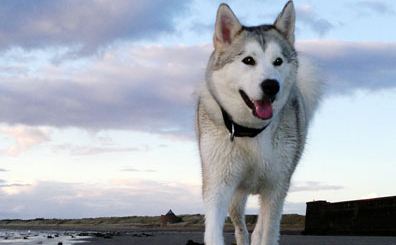The husky was used for centuries by the Chukchi tribe in Siberia as a sled dog. At the beginning of the twentieth century, it was imported into North America by fur traders, and participated in numerous sleigh races, in which it showed itself to be very efficient. In 1925, a diphtheria outbreak in Nome, Alaska, and the husky was used for the delivery of drugs. He then excelled as a rescue and research dog during World War II and subsequently gained notoriety worldwide.
Character and Behavior
The husky is a very cheerful and very intelligent dog. It is not aggressive and shows friendly with everyone; He’s not going to make a good watchdog. They get along well with children and can make a good companion dog provided they have enough space and exercise. He must be trained from an early age because he is a stubborn and mischievous dog. how long do Huskies live? The husky can live 12 – 15 years.
Health
The husky is a very sturdy dog whose life expectancy ranges from 12 to 15 years. However, the eyes, skin, and digestion must be monitored in particular.
Power
Given the problems of digestion that the husky may face, it does not tolerate starches well. However, you can give it to them, provided they are well cooked. It is an “economic” dog because, for the maintenance of its organism, it must consume less food than the other dogs. Depending on its weight, it will need 400 to 600 g of meat per day.
Grooming
The husky is a very clean dog that, like cats, is able to wash. So a bath per year may be enough. It’s hair does not require any special maintenance, except during the two seasonal molts where it must be brushed.
Standard
- Size: From 53 to 60 cm for males and from 51 to 56 cm for females.
- Weight: 20 to 27 kg for males and 16 to 23 kg for females.
- Hair: The hair is thick, doubled with a soft undercoat and supplied. It is straight and of average length.
- Dress: All colors are allowed, including various shades of gray and silver, sand, red and black and white, with, frequently, large stains at the level of the head.
- Eyes: They are in almonds and slightly oblique. They can be brown, blue, minnows or hétérochromes.
- Ears: Medium-sized, they are triangular in shape, upright and supplied in hair.
- Tail: It is bent on its back, except at rest, and is well tufted.
Warning
Contrary to the ideas received, the value of a husky is not determined by the blue color of its eyes, which is not obligatory. Also, be aware that even if this dog is classified as a sled dog, it does not suffer from the heat.

